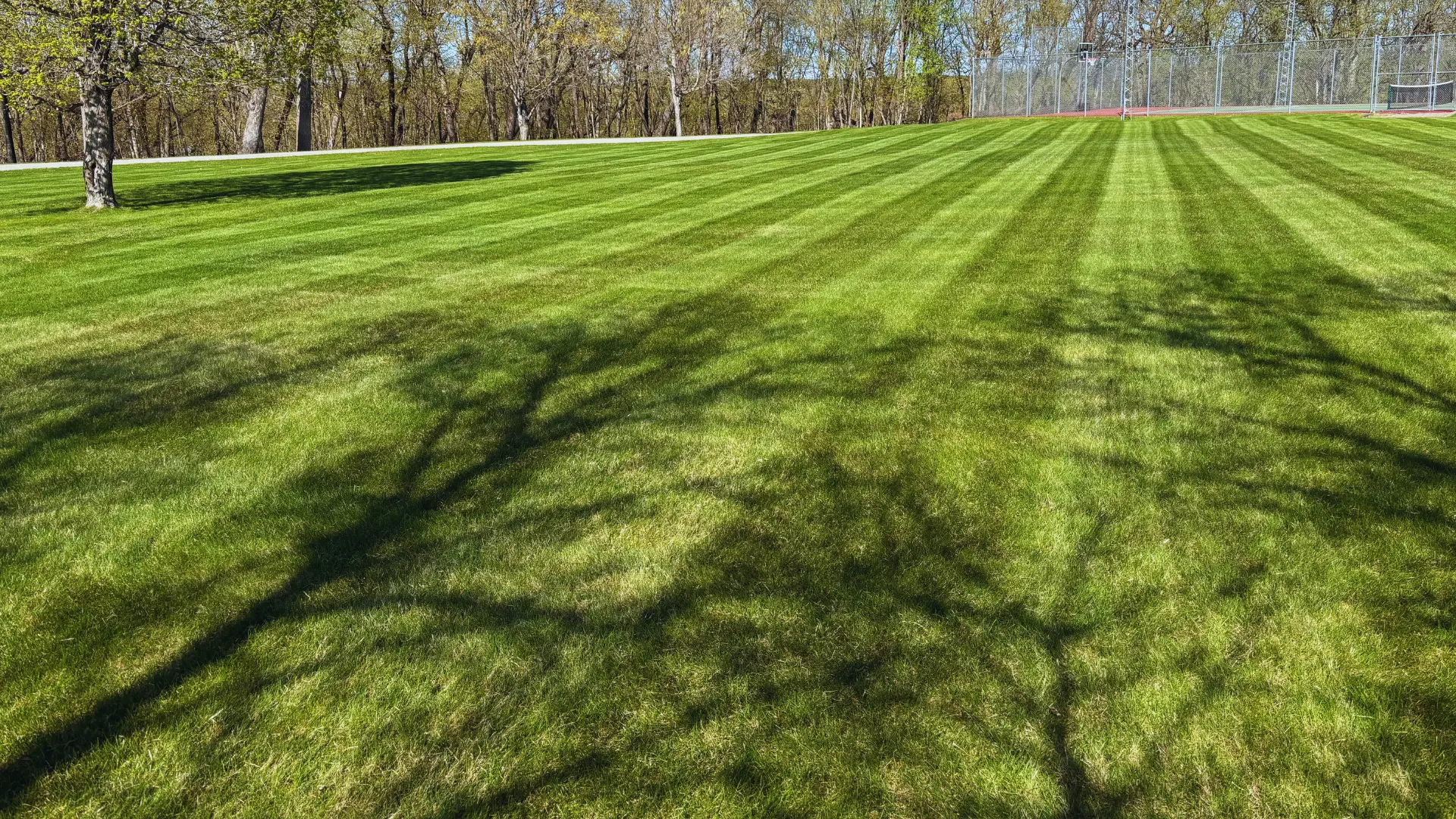The Cutting Edge: The Hidden Secret to a Healthier, Greener Lawn
We all love the look and smell of a freshly mowed lawn. It’s the centerpiece of a beautiful landscape. But have you ever noticed that sometimes, a day or two after mowing, the tips of your grass turn a little brown or frayed?
Many people blame the weather or a lack of water, but the real culprit is often hiding in plain sight: a dull mower blade.
At Miller Yard Care, we believe that the quality of our cut is just as important as the quality of our equipment. It’s why we take an extra step that most others don’t. Today, we want to pull back the curtain and show you why the sharpness of our mower blades is the secret to a truly healthy, vibrant lawn.
The Science of the Cut: A Scalpel vs. a Butter Knife
To understand the importance of a sharp blade, turfgrass experts at leading universities like Purdue University and the University of Minnesota Extension use a simple analogy: imagine surgery. A surgeon uses a sharp scalpel to make a clean incision that heals quickly. A dull blade is like trying to do the same job with a butter knife—it tears, shreds, and causes excessive damage.
Your grass is a living organism, and the same principle applies.
-
A sharp blade slices cleanly through the grass leaf, creating a tiny wound that the plant can seal and heal quickly.
-
A dull blade rips and tears the grass, leaving a large, ragged wound.
This single difference—tearing versus cutting—has a massive impact on the health and appearance of your lawn.
The 3 Major Problems Caused by Dull Mower Blades
Based on extensive university research, here’s what really happens when you mow with a dull blade:
1. A Gateway for Disease
The ragged, torn grass tips created by a dull blade are open wounds. According to turf specialists at the University of Nebraska-Lincoln, these wounds are perfect entry points for common fungal diseases like Brown Patch, Dollar Spot, and Red Thread. The plant is weakened and vulnerable, making it much more likely to get sick. A clean cut from a sharp blade heals fast, creating a strong barrier against these diseases.
2. A Dull, Brown Appearance
That clean, green look you want comes from healthy grass blades. When a dull blade shreds the tips of your lawn, those damaged ends die and turn a whitish-brown color within a day or two. This gives the entire lawn a dull, dehydrated, and unhealthy cast, even if it's well-watered.
3. Increased Stress and Water Loss
A plant with a large, ragged wound has to work much harder to heal itself. It diverts energy from important functions like root growth to focus on damage control. Furthermore, the shredded leaf tissue loses significantly more water to evaporation, increasing the lawn's need for water and making it more susceptible to drought stress during hot summer days.
The Miller Yard Care Difference: Our Daily Commitment to Sharpness
Turfgrass professionals recommend that, at a minimum, mower blades should be sharpened every 8-10 hours of use. For the average homeowner, that might mean a few times a season.
We take it to the next level.
To ensure every single lawn we service gets the absolute best treatment, we sharpen our mower blades. Every. Single. Day.
This isn't just an extra step for us; it is central to our philosophy of professional lawn care. This daily commitment ensures that your lawn is never torn or damaged. It receives a clean, surgical cut every single time we visit. This practice directly leads to:
-
A greener, more beautiful appearance.
-
A stronger, more resilient lawn that can fight off disease.
-
Improved water efficiency and drought tolerance.
Your Lawn Deserves the Best
The health of your lawn is an investment. The way it's cut is one of the most significant factors in protecting that investment. Our daily blade-sharpening regimen is just one example of the professional standards we bring to every property we service.
If you're ready for a truly professional cut that puts the health of your lawn first, contact the team at Miller Yard Care today! Let us show you the difference a sharp edge can make.


Comments (0)
Thanks for your comment!
Thanks for your feedback! Your comments have been successfully submitted! Please note, all comments require admin approval prior to display.
Error submitting comment!
There is a problem with your comment, please see below and try again.